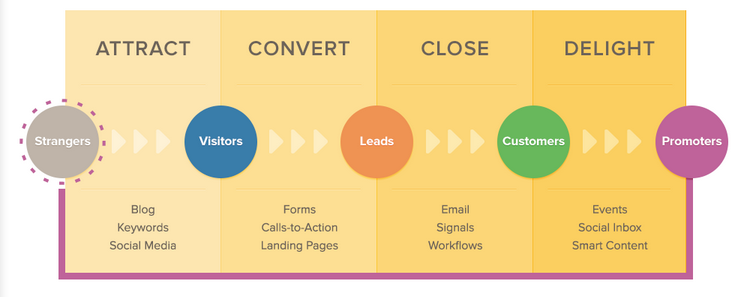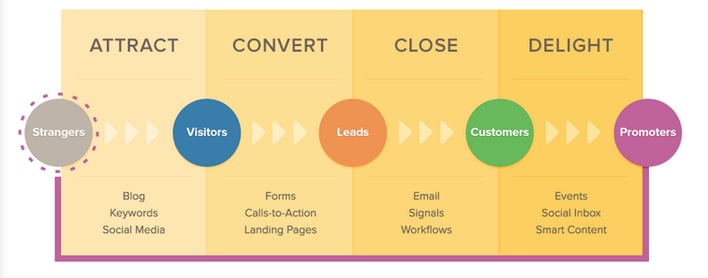
What is inbound marketing? Inbound marketing is a popular form of marketing today that works to drive prospects to your website by attracting strangers and converting them into customers and promoters of your brand, rather than directly reaching out to people through advertising, cold calling, or other types of outbound marketing. Inbound marketing works by providing appealing, relevant content for a target audience and making your company easy for consumers to find online.

The easiest way to understand inbound marketing techniques is by identifying outbound techniques. Outbound techniques have been the go-to sales and marketing strategies forever, but as the digital age progresses, they are less effective at reaching modern consumers. Outbound techniques put a lot of information out to a lot of people at one time with the hope that their target customers see it and call them. Examples of this method include billboards, TV commercials, and online directories. Today's digital consumers know what they want, so marketing needs a new strategy, and it's getting one with inbound. But how is inbound marketing the answer to your business challenges?
Here are some examples of common business challenges:
- My business isn't well known because we primarily use word-of-mouth advertising.
- My business doesn’t show up in Google results.
- My business needs more leads and more sales.
1. My business isn't well known because we primarily use word-of-mouth advertising.
Word-of-mouth advertising and other outbound sales methods like cold calling, walk-in visits, or coffee appointments, are limited to the amount of time your sales force has to put into them. In addition to these outbound methods, a business needs traffic coming in, as well. Generating inbound traffic with the inbound methodology starts with enhancing your web presence across numerous platforms, including social media and search engine websites. By becoming more visible online, your website can begin to attract more website visitors, encouraging them to learn more about your business and contact you for service.
Because modern consumers conduct their own research to educate themselves prior to making a purchase, websites are a vital aspect of marketing. Often, when a consumer contacts a business today, they already have a pretty good idea of what, exactly, they want to buy. Many visitors to your website may just be looking for preliminary information, so providing valuable resources and making sure your website represents your brand well is an important place to start attracting more business.
2. My business doesn't show up in Google results.
Most business owners know that if they aren’t being found on the first page of Google, they won’t be found online at all because most folks simply do not sort through pages of search results. Organic search results are results found on search engines like Google, Yahoo, or Bing that are not paid ads. Inbound marketing depends heavily upon providing quality content not only for the end user but also for search engines to categorize—enabling more people to find you online. This process of working toward getting found on search engines is referred to as search engine optimization (SEO). The number one way to enhance your website’s SEO is to add more quality content that's relevant to your target audience.
3. My business needs more leads and sales.
If your website already gets tons of website traffic each month but you aren't seeing your leads and sales correlate with those numbers, you should take another look at your website from your visitors' point of view. Often, the reason this happens is that the website doesn't provide a good place for visitors to submit their information in order to be contacted. Through a tool like HubSpot, you can develop and publish landing pages and forms for this very purpose. Go through your website page by page, identify your visitors' journey through your site, and see if there are appropriate points at which to prompt them to contact you. If not, add them, and watch your leads and sales roll in!
Another reason you may see high traffic but few sales is that users are arriving at your website expecting something different from what they find. For example, if your meta description (the text that appears in search engine results, describing the linked page) mentions red shoes, but visitors arrive at your website and see only blue shoes, they aren't likely to stick around to make a purchase. Any time you create a link to your website, make sure that the text that users see before clicking the link gives them an accurate idea of what to expect when they get to your site.
Inbound marketing solves many business challenges in addition to the three we discuss here. If your business is facing a marketing challenge, get in touch with us for a free consultation about how an inbound marketing strategy can help you overcome it and reach your business goals!
Read this case study to see how inbound marketing helped a garage door company increase its website traffic from organic search results and gain leads!





